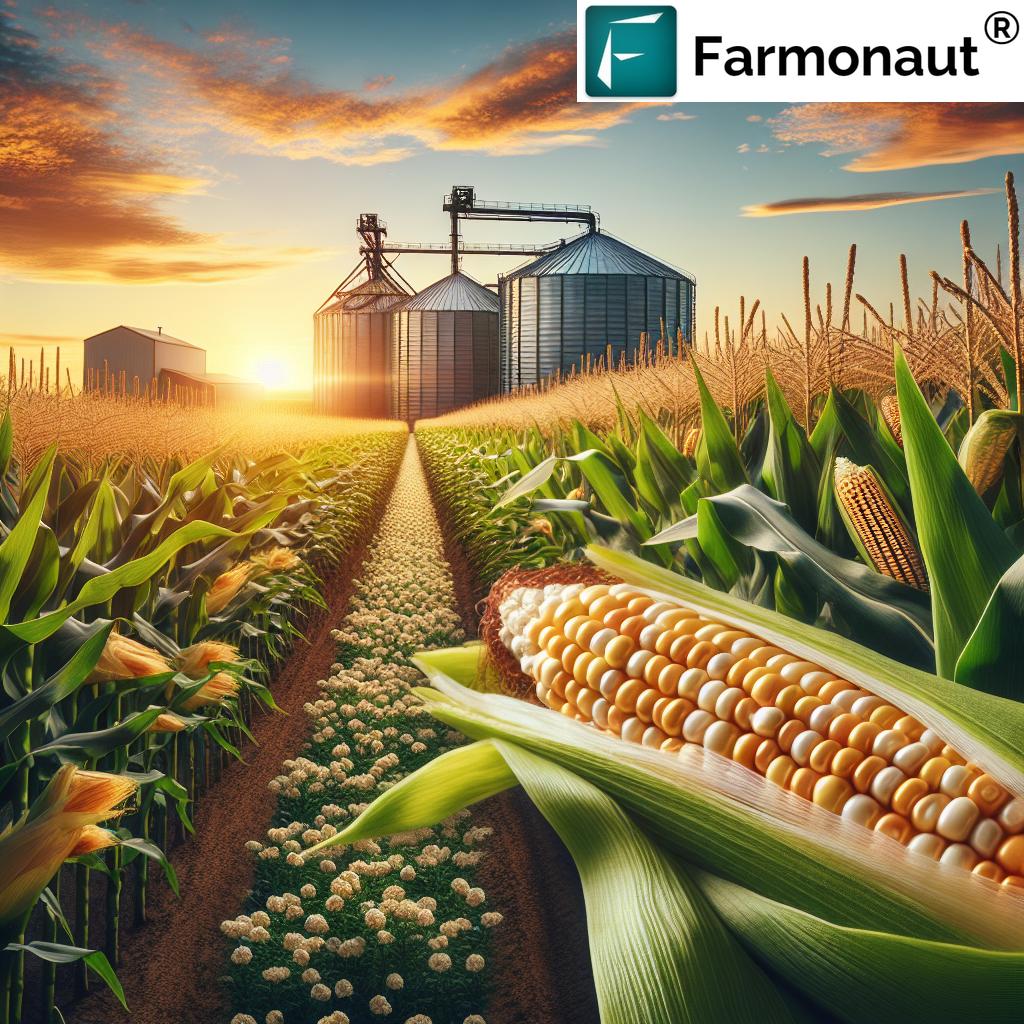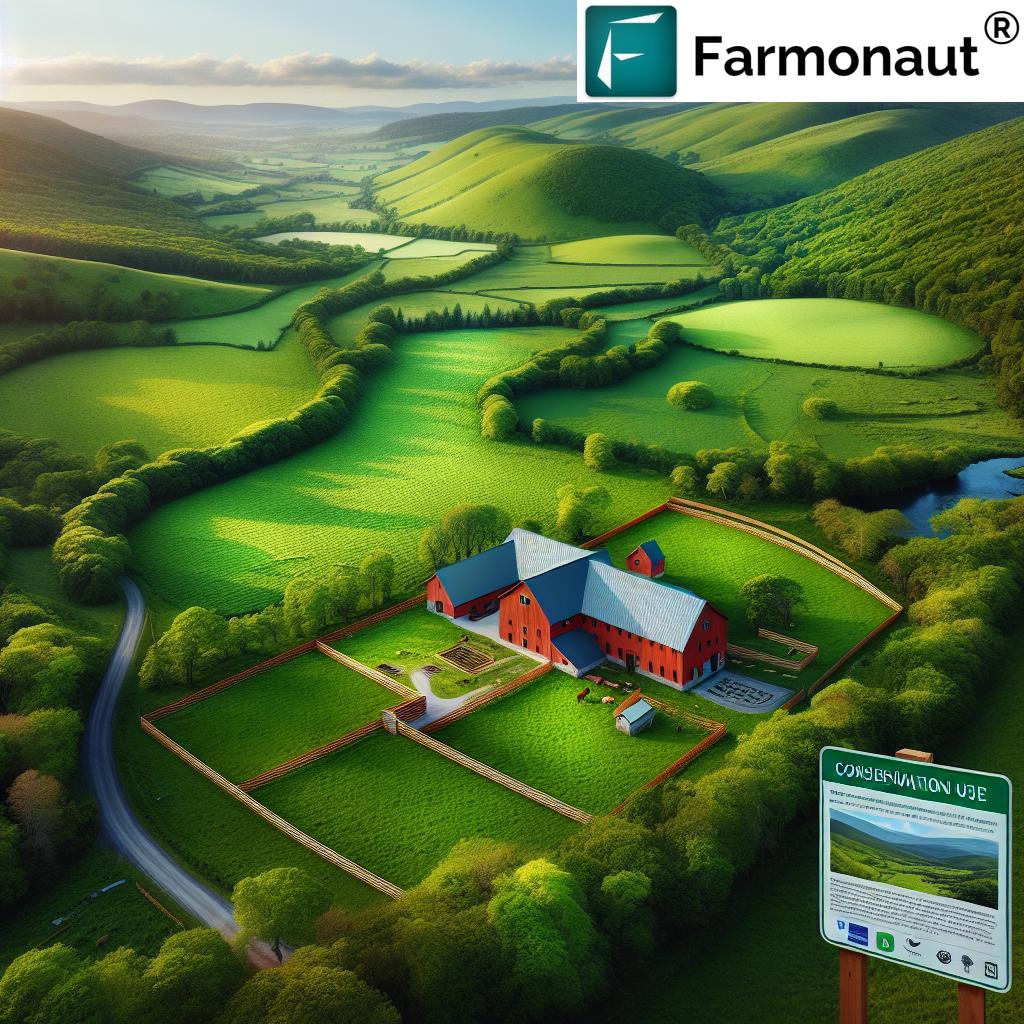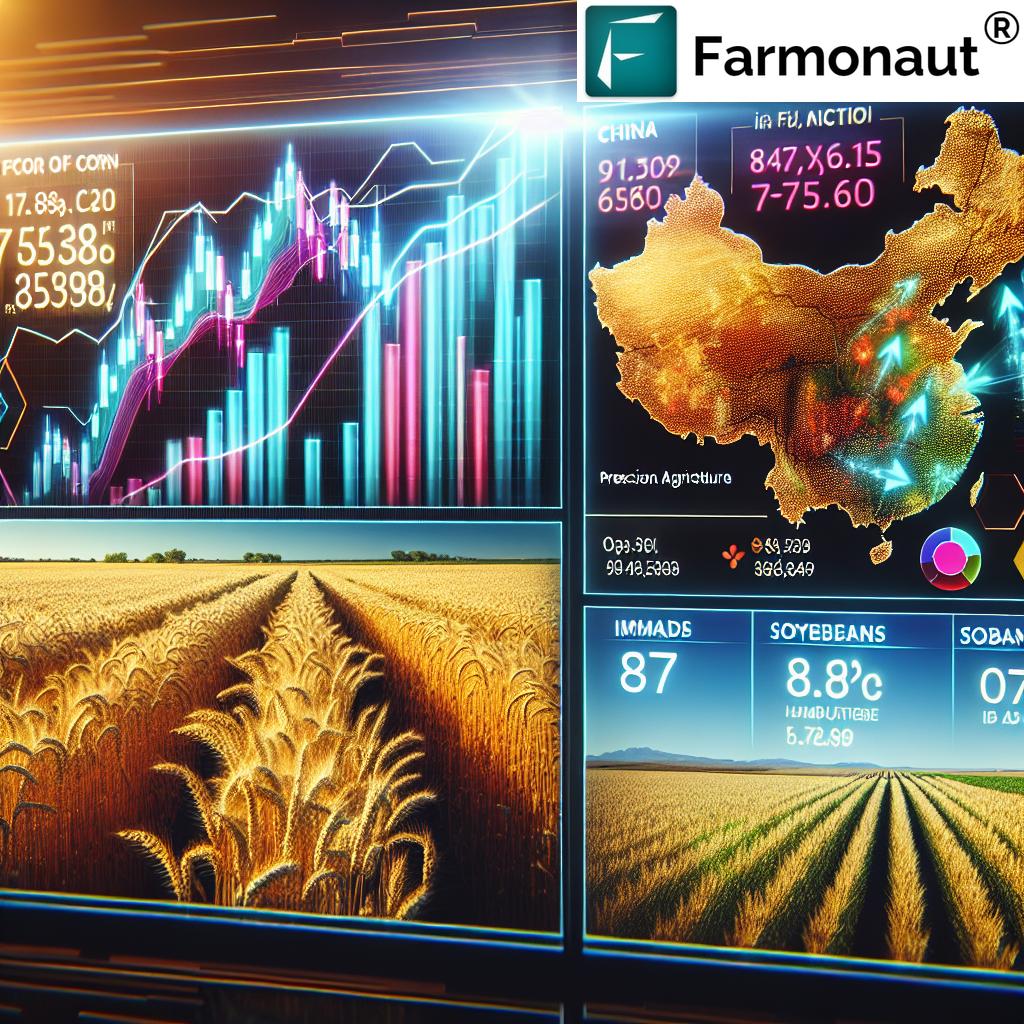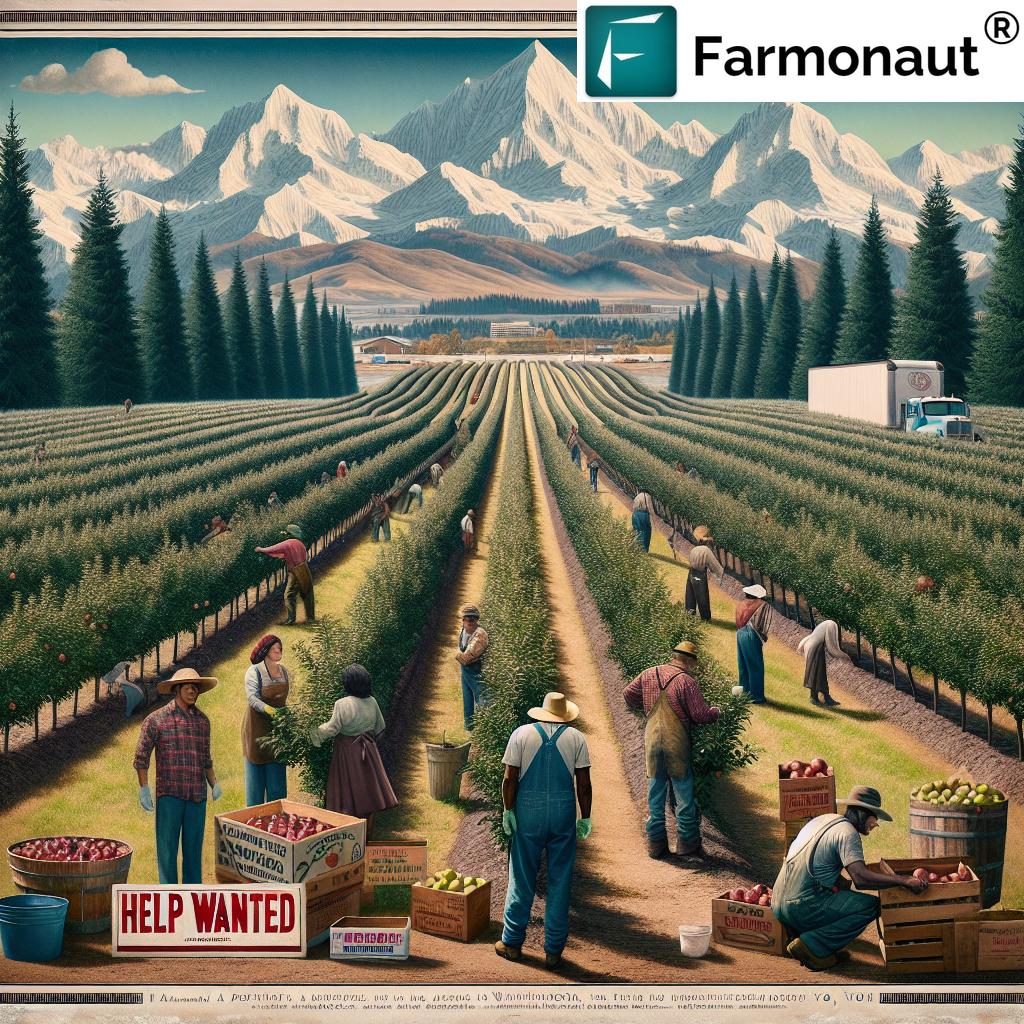Table of Contents
- Introduction
- Illinois Wildflower Trivia
- Why Plant Wildflower Seeds in Illinois?
- Best Time to Plant Wildflower Seeds in Illinois
- Wildflower Planting Seasonal Calendar for Illinois
- Site Preparation for Wildflowers in Illinois
- How to Sow Wildflower Seeds: Selection and Sowing Guide
- Wildflower Seed Germination and Establishment
- Wildflower Seed Stratification & Scarification Explained
- Watering, Care, and Wildflower Garden Maintenance Tips
- Weed Management for Your Wildflower Area
- Enhancing Sustainability with Farmonaut
- Illinois Wildflower Trivia
- FAQ: Planting Wildflower Seeds in Illinois
- Conclusion & Next Steps
Best Time to Plant Wildflower Seeds in Illinois Guide
Planting wildflower seeds in Illinois is a fulfilling endeavor that not only transforms the landscape but also fosters biodiversity, nurtures pollinators, and promotes eco-friendly land management. The beauty and ecological significance of native wildflowers in Illinois are unparalleled, enriching both natural ecosystems and managed agricultural or forestry areas. However, successful wildflower establishment hinges on understanding the optimal timing for sowing, site preparation, and proper care to ensure a flourishing, sustainable wildflower garden.
“In Illinois, planting wildflower seeds between mid-April and mid-June can increase germination rates by up to 60%.”
Why Plant Wildflower Seeds in Illinois?
Planting wildflower seeds in Illinois is much more than a landscaping trend—it’s a vital act for restoring ecosystem balance and increasing environmental sustainability. Let’s explore why wildflower gardens are especially beneficial in Illinois:
- Biodiversity Boost: Planting native wildflowers in Illinois introduces resilience and diversity to local ecosystems, providing habitat for bees, butterflies, and other pollinators.
- Soil Health: Their deep root systems improve soil structure, bolster fertility, and enhance water infiltration with minimal disturbance.
- Pollinator Support: Native wildflowers Illinois depend on are crucial for maintaining vibrant populations of pollinating insects and birds.
- Sustainable Land Use: Whether in agricultural, forestry, or urban spaces, wildflower plantings support natural pest control and minimize reliance on herbicide and fertilizer inputs.
- Aesthetic Value: The vivid blooms provide year-round color, texture, and interest to the landscape.
Best Time to Plant Wildflower Seeds in Illinois: Understanding Seasons & Timing
One of the key factors for wildflower seed germination and establishment is correct timing. When to plant wildflower seeds in Illinois? The answer lies in aligning sowing schedules with the natural rhythms of native species and the local climate. Here’s a thorough look at when and why to sow wildflower seeds for optimal results:
Spring Planting: Awakening Lifecycles (March – June)
- Window: Early March until June 20 is viable for spring wildflower planting.
- Advantages:
- Spring planting works especially well for wildflower species that don’t require cold stratification.
- Ample rainfall and gradually warming temperatures encourage prompt germination and vigorous seedling growth.
- Best suited for flower seeds such as Black-eyed Susan, coreopsis, and annuals.
- Note: Patience is key—some native species’ seeds may not germinate in the first year but will appear in subsequent growing seasons.
Fall Planting: Harnessing Natural Stratification (October – Frost)
- Window: From late October until just before the ground freezes is the optimal time for sowing seeds that require cold stratification.
- What Is Cold Stratification? Many Illinois native wildflowers need a period of cold, moist conditions—known as cold stratification—to break dormancy and stimulate germination. Sowing in fall allows seeds to experience winter, naturally providing this requirement. (reconnectwithnature.org)
- Benefits of Fall Sowing:
- Seeds are ready to germinate at just the right moment as soil temperatures warm in spring.
- Results in stronger root systems and more robust growth from the very first season.
Comparing Spring vs. Fall for Illinois Wildflower Seed Sowing
- Spring: Ideal for species not needing stratification; germination influenced by moisture and soil temperature.
- Fall: Essential for cold-stratification species; takes advantage of natural processes for better germination rates and strong establishment.
- Farmer’s Tip: Always consult with local extension offices or use satellite-based monitoring tools to check ground temperatures and seasonal trends in your area for precise timing.
Summary Table:
| Planting Season | Ideal For | Native Example Species |
|---|---|---|
| Spring (Mar – June) | Non-stratified seeds, fast-germinating annuals | Black-eyed Susan, Lance-leaved Coreopsis |
| Fall (Oct – Nov/frost) | Seeds requiring natural cold stratification | Purple Coneflower, Wild Bergamot, Prairie Blazing Star |
Wildflower Planting Seasonal Calendar for Illinois
Let’s make your planning even easier! Below is a comprehensive, eco-friendly “Wildflower Planting Seasonal Calendar” tailored for Illinois. This table provides native wildflower suggestions, sowing schedules, expected germination times, sunlight preferences, typical growth, and ecological benefits.
| Wildflower Species | Optimal Planting Window (Months) | Germination Time (Days) | Sunlight Needs | Growth Height Estimate (inches) | Eco-friendly Benefits |
|---|---|---|---|---|---|
| Black-eyed Susan Rudbeckia hirta |
Spring: Mar–Jun Fall: Oct–Nov |
10–20 | Full Sun/Part Shade | 18–36″ (45–90 cm) | Pollinator support; Erosion control |
| Purple Coneflower Echinacea purpurea |
Fall: Oct–Nov (for stratification) | 10–30 | Full Sun | 24–36″ (60–90 cm) | Boosts pollinators; Medicinal properties |
| Prairie Blazing Star Liatris pycnostachya |
Fall: Oct–Nov | 20–30 | Full Sun | 24–48″ (60–120 cm) | Attracts butterflies, nectar source |
| Wild Bergamot Monarda fistulosa |
Spring: Mar–Jun Fall: Oct–Nov |
10–30 | Full/Partial Sun | 24–36″ (60–90 cm) | Bee/butterfly habitat, aromatic leaves |
| Lance-leaved Coreopsis Coreopsis lanceolata |
Spring: Mar–Jun | 5–20 | Full Sun | 12–24″ (30–60 cm) | Low water; soil improvement |
| Ohio Spiderwort Tradescantia ohiensis |
Spring: Mar–Jun Fall: Oct–Nov |
14–30 | Full Sun/Part Shade | 24–36″ (60–90 cm) | Sharp color contrast; pollinator food |
| Switchgrass Panicum virgatum |
Spring: Apr–Jun Fall: Oct–Nov |
10–30 | Full Sun | 36–60″ (90–150 cm) | Soil carbon storage; water retention |
| Illinois Bundleflower Desmanthus illinoensis |
Spring: Apr–Jun | 14–21 | Full Sun | 18–36″ (45–90 cm) | Nitrogen fixation; supports wildlife |
This table illustrates the diversity of native wildflowers Illinois supports, their ideal sowing months, environmental tolerance, and the unique ecological role of each species. For detailed, localized guidance, you can also leverage data-driven agricultural tools in our Large Scale Farm Management Platform for area mapping, resource allocation, and optimal planting time recommendations.
Site Preparation for Wildflowers in Illinois
Proper site preparation for wildflowers sets the stage for long-term success. Wildflowers, especially natives, are adapted to a range of soils but need proper preparedness for robust germination and growth.
-
Remove Competing Vegetation:
- Eliminate turf grass, aggressive weeds, or crop stubble using smothering (cardboard, tarps), shallow cultivation, or careful application of herbicide where necessary. Always follow safety and environmental guidelines for herbicide use in Illinois.
-
Prepare the Soil:
- Loosen the soil to a depth of 2–3 inches. This enhances seed-to-soil contact without promoting weed seed germination from deeper layers.
- Amend poor soils with organic compost to boost soil fertility and structure, especially in depleted, sandy, or heavy clay regions.
-
Level and Smooth:
- Remove large clods or stones; rake area evenly. This prevents seeds from settling too deep and promotes uniform sowing and germination.
You can use carbon footprint tracking tools to assess the environmental impact of your wildflower planting compared with other land uses. This step reinforces a sustainability-first approach in modern agriculture.
How to Sow Wildflower Seeds: Selection and Sowing Guide
Choosing the Right Wildflower Seeds
- Select native wildflowers Illinois naturally supports—these thrive without excessive fertilizing or watering and are well-adapted to the local climate and soil.
- Use site-specific wildflower mixes for dry prairie, wetland, woodland edge, or partial-shade gardens.
- Always confirm whether each species needs stratification, scarification, or a specific planting depth.
Sowing Techniques
- Mixing Seeds for Even Coverage:
- Blend your seeds with an inert carrier—dry sand, fine compost, or peat moss—to help distribute seeds evenly and avoid clumping.
- Hand Broadcasting (Small Plots):
- Scatter the seed/carrier mixture uniformly over the prepared area.
- Mechanical Sowing (Large Areas):
- Use a seed drill or rotary spreader, calibrating for light, shallow seed placement.
- Ensuring Seed-to-Soil Contact:
- Lightly rake or roll the soil after sowing. Seeds should be no deeper than 1/8 inch as most require light for germination.
- A thin layer of weed-free straw mulch is optional—protects seeds from wind and birds and helps retain soil moisture.
For those managing large tracts or requiring record-keeping, our fleet and resource management tools streamline logistics for multi-acre wildflower projects and other agricultural operations.
“Over 150 native wildflower species thrive in Illinois, supporting biodiversity and sustainable landscapes when planted at optimal times.”
Wildflower Seed Germination and Establishment
Wildflower seed germination is influenced by timing, temperature, and seed preparation (stratification/scarification). Here’s what you need to know:
-
Patience is Essential:
- Some seeds sprout within 2-3 weeks; others require several months or more, especially if cold stratification is needed.
- Native perennials commonly take a second—or even third—season for full visible establishment.
-
Initial Growth:
- In the first year, seedlings may remain under six inches tall while developing deeper root systems. Don’t mistake slow growth for failure!
For enhanced monitoring, Farmonaut’s satellite-based crop health monitoring system allows you to visualize establishment, track vegetation density, soil moisture, and spot issues early in both wildflower plots and production fields.
Wildflower Seed Stratification & Scarification Explained
Many native wildflower seeds require special pretreatment to simulate seasonal changes before they will germinate.
Wildflower Seed Stratification (Cold Treatment)
- Definition: Exposing seeds to cold, moist conditions (either naturally or artificially) to break dormancy. (extension.illinois.edu)
- Natural Method: Sow seeds in autumn; overwintering mimics nature’s process.
- Artificial Method: Mix seeds with moist sand or peat moss in a sealed bag, refrigerate for 30-90 days (consult seed instructions).
Wildflower Seed Scarification (Seed Coat Abrasion)
- Definition: Scarification is the process of physically or chemically breaking the hard seed coat for water penetration and better germination.
- Methods: Lightly nicking seeds with sandpaper, soaking in warm water, or natural frost/soil cycles (typical if you use fall sowing).
- Best Practice: Only process seeds marked as needing scarification; avoid over-aggressively handling delicate seed species.
Combining proper wildflower seed stratification and scarification with Illinois-appropriate timing and planting depth optimizes wildflower seed germination rates and garden success.
– Integrate satellite data for custom farm, garden, or wildflower site monitoring.
Developer Docs
Watering, Care, and Wildflower Garden Maintenance Tips
Watering Schedules
- During establishment (first month): Ensure soil stays moist to a depth of one inch. Water twice weekly if rainfall is insufficient.
- After establishment: Native wildflowers generally require little supplemental watering, except in extended droughts.
First-Year Maintenance
- Don’t pull weeds—vigorous hand-pulling can disturb shallow-rooted native seedlings.
- Instead, clip back any vegetation taller than 6 inches to reduce shade and deter weed dominance.
- At season end, leave dead vegetation standing through winter; this protects wildlife and provides insulation. Cut it to soil level the following spring.
- Avoid excessive foot traffic in the planted area until wildflowers are fully established.
See more on sustaining your landscape’s ecological footprint at our Carbon Footprinting product page.
Weed Management for Your Wildflower Area
Establishing native wildflowers requires patience and a careful weed management strategy:
- Avoid Disturbance: Hand-pulling can uproot desired wildflower seedlings.
- Selective Mowing: Keep all growth at or below six inches by mowing as needed in the first growing season.
- No Chemical Herbicide Applications: Once your wildflower seeds are sown, avoid broadcast herbicides. Spot-treatment (when absolutely required) can be done only prior to sowing and after identifying specific weed threats.
- Second and Third Year: Spot-manage persistent weeds; as your wildflower area matures, native plants will outcompete most invasives.
Enhancing Sustainability with Farmonaut in Wildflower Planting
At Farmonaut, we deliver advanced, sustainable tools for agricultural innovation and ecological stewardship:
- Satellite-Based Planting Insight: Our real-time crop and vegetation monitoring system helps you assess ground cover, plant health, and site changes across growing seasons, supporting timely wildflower establishment decisions.
- AI-Powered Advisory: Using Jeevn AI, you can access tailored, seasonally-aware advice that considers Illinois climate, soil development, and species-specific needs for optimal wildflower garden maintenance and resource allocation.
- Blockchain Traceability: For organizations seeking transparency in seed sourcing and wildflower ecosystem management, our traceability solutions (learn more here) ensure data-backed confidence in eco-friendly restoration practices.
- Resource Management: Fleet tools optimize your logistics for wildflower seeding projects of any scale.
- Environmental Reporting: Our carbon footprinting services help users monitor and reduce the environmental impact of planting wildflower seeds in Illinois, facilitating regulatory compliance and sustainable landscape certification.
FAQ: Planting Wildflower Seeds in Illinois
1. What is the best time to plant wildflower seeds in Illinois?
The best time to plant wildflower seeds in Illinois is during two key periods: fall (late October to before ground freeze) for seeds that require cold stratification and spring (early March through June 20) for species that do not need stratification.
2. Do all wildflower seeds require stratification or scarification?
No. Many native perennials benefit from cold stratification, but annuals and certain perennials germinate readily in spring soils. Check each seed’s requirements before sowing.
3. How deep should I sow wildflower seeds?
Most wildflower seeds should be sown no deeper than 1/8 inch. Surface-sowing with a sand or peat moss carrier is ideal for tiny, light-dependent seeds.
4. How do I prepare my site for wildflower planting?
Remove all existing vegetation, loosen the soil 2–3 inches deep, and optionally amend with compost for better fertility and structure. Level the area and use a rake to prepare a fine seed bed.
5. How do I distinguish wildflower seedlings from weeds?
It can be challenging in the first season. Avoid pulling any plants until certain. Mow or trim instead of pulling to allow wildflowers time to establish.
6. What kind of maintenance does a wildflower garden in Illinois require?
During establishment, water as needed, mow or trim as described, and monitor for severe weed invasions. Once established, native wildflowers require minimal watering, no fertilizing, and limited maintenance.
7. How long does it take for native wildflowers in Illinois to fully establish?
Initial seedlings usually emerge within a few weeks to a couple of months, but a full bloom and mature stand might take 2–3 years.
8. How can Farmonaut help with wildflower and land management?
We offer satellite-driven insights, AI-powered farm advice, resource management tools, and carbon footprint tracking to help optimize every stage—from site assessment, timing, and preparation to maintenance and reporting—for wildflower, agricultural, and forestry applications in Illinois and beyond.
Conclusion & Next Steps
Creating a successful wildflower garden in Illinois requires strategic timing, thoughtful site preparation, careful sowing, and attentive maintenance. Choose native seeds, align with Illinois’s spring or fall planting windows, and employ sustainable practices to benefit pollinators, soil, and local ecosystems. Maintain patience, as the beauty and resilience of native wildflowers will reward your efforts for years to come.
For professional users, environmental organizations, and agricultural decision-makers, Farmonaut’s suite of precision agriculture technologies can simplify and optimize every step of wildflower plot monitoring, resource management, and eco-compliance. Explore detailed features on our Crop Plantation and Forest Advisory App, Carbon Footprinting Tool, and Traceability Solutions for actionable, data-backed stewardship.
Ready to transform your land and support Illinois biodiversity? Download Farmonaut’s App or try it on the web to get started, or visit our API center for custom integrations.
Embrace the wild: plant, monitor, and sustain eco-friendly wildflower gardens in Illinois with confidence and precision!













